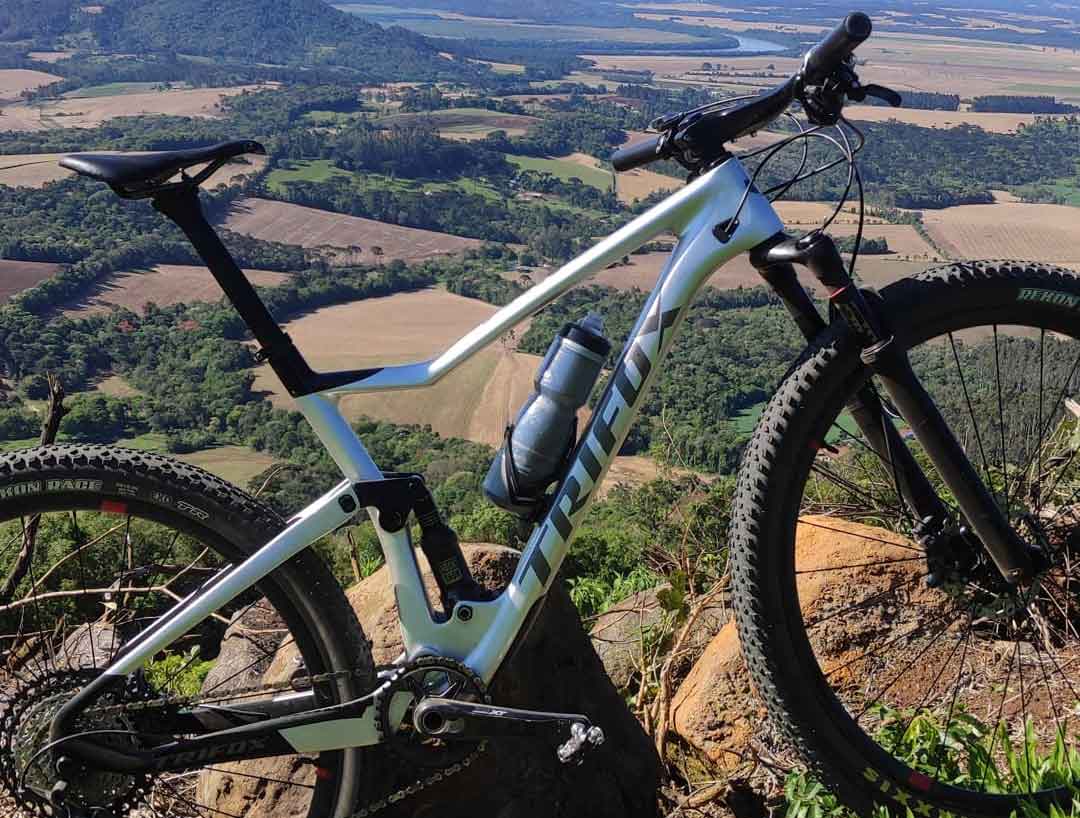
Cyclists have many different purposes for cycling, so each person's training goals and methods should be tailored to their individual needs. In fact, each of us has a “personal trainer”, and that is ourselves. Therefore, we must rely on self-awareness to adjust the intensity, frequency, and type in training and cycling, so this is why we are prone to make mistakes in training. So, Have you made the following six common wrong training methods. 1. Too little training Are you the kind of rider who trains sporadically and directionlessly? Although this kind of training can ensure that you stay away from sports injuries, it won't make you win any competitions or blow up your friends to get to the cafe first. What makes you progress? It is constant training. Please try to find out why you train in this way, is it because of work? Or family? After all, these two are more important than riding a bicycle, understandable; but if it is pure laziness, then please change yourself. Tips: Consider adding more low-intensity training (such as walking and simple swimming). In this way, you will maintain a basic fitness level and make recovery training easier and more enjoyable. 2. Too enthusiastic Many cyclists think that they can ride faster by over-training harder. To a certain extent, this is true; but for most people, this will only accumulate fatigue, leading to an “explosion” in the end. Only when your training method is smart enough, harder training will bring improvement. Please refer to the 10% principle: The every-week increase in mileage or average weekly intensity never exceeds 10%. Tips: Try to ensure that after two to three weeks of high-intensity training, there is a week of rest and relaxation time to enjoy the fun of leisure riding. 3. Ride too fast It is true that certain times and places can allow you to ride faster, but are you really the one who can walk around and resist the temptation of high speed? For beginners, try to mix at least two short and simple riding when you are out for high-intensity cycling. Simple riding not only allows you to fully recover from high-intensity cycling loss while traveling and aerobic exercise can make you cycle faster next. Tips: We live in a fast-paced society and must complete everything yesterday. When you go to participate in riding activities for the purpose of bursting, please take the opportunity to slow down for a while. This will not only make you feel full of blood and resurrect, but it will also actually increase your training efficiency. 4. Decided to ride too late Ideally, most of the cyclists who work from 9 to 6 come home from work, sit down, eat two bites, and then go out to ride for an hour; the reality is that after a day's fatigue, they can no longer ride. Can only “Ge You Slouching” on the sofa. As a result, the solution was to go out cycling early the next morning. Obviously, the most difficult thing is to get up early, it’s proper. But doing some careful planning the night before may mean you start the day without good traffic conditions, clean routes, and satisfactory completion of the ride. Tips: Make sure your bike and tools are ready the night before. Know what you want to do, and make sure that cycling has a clear purpose. Before you go out, remember to have breakfast and a drink (preferably coffee) to ensure riding efficiency. 5. The weight is too light The equipment party is obsessed with the word “weight”. Cycling and weight are always inseparable. Whether it is buying a full-carbon seat cushion for the “life planning artifact” or doing everything possible to lose weight, the ultimate goal is to obtain a better power-to-weight ratio. However, a misconception is that lighter can ride faster. You have to realize food is not your enemy, but your friend. It provides important nutrients to help you ride a bike. Tips: Don’t be crazy about mini weight, and eat healthily. Try not to use weight loss as your only motivation for cycling. If you eat wisely and exercise regularly, your weight will naturally drop. 6. Ride too far Riding too many miles a week, overtraining can cause sports injuries. The secret to making your ride farther is to increase gradually, which will put you in a good athletic form. Gradually adapt through the 10% principle mentioned above. If you ride 100 kilometers this week, you should not exceed 110 kilometers next week. If you want to increase every weekly training volume, but you are worried that your body will not be able to load, then you can try some different cross-training, such as walking, running, swimming, or strength training. This will improve your overall improvement considerably, but it is important to follow the same principles and not do too much too fast. Tips: Increasing mileage means the accumulation of training pressure, so as the weekly training volume increases, it is important to balance training pressure and rest. Over time, you will be able to cope with higher mileage and have a positive effect on your training.
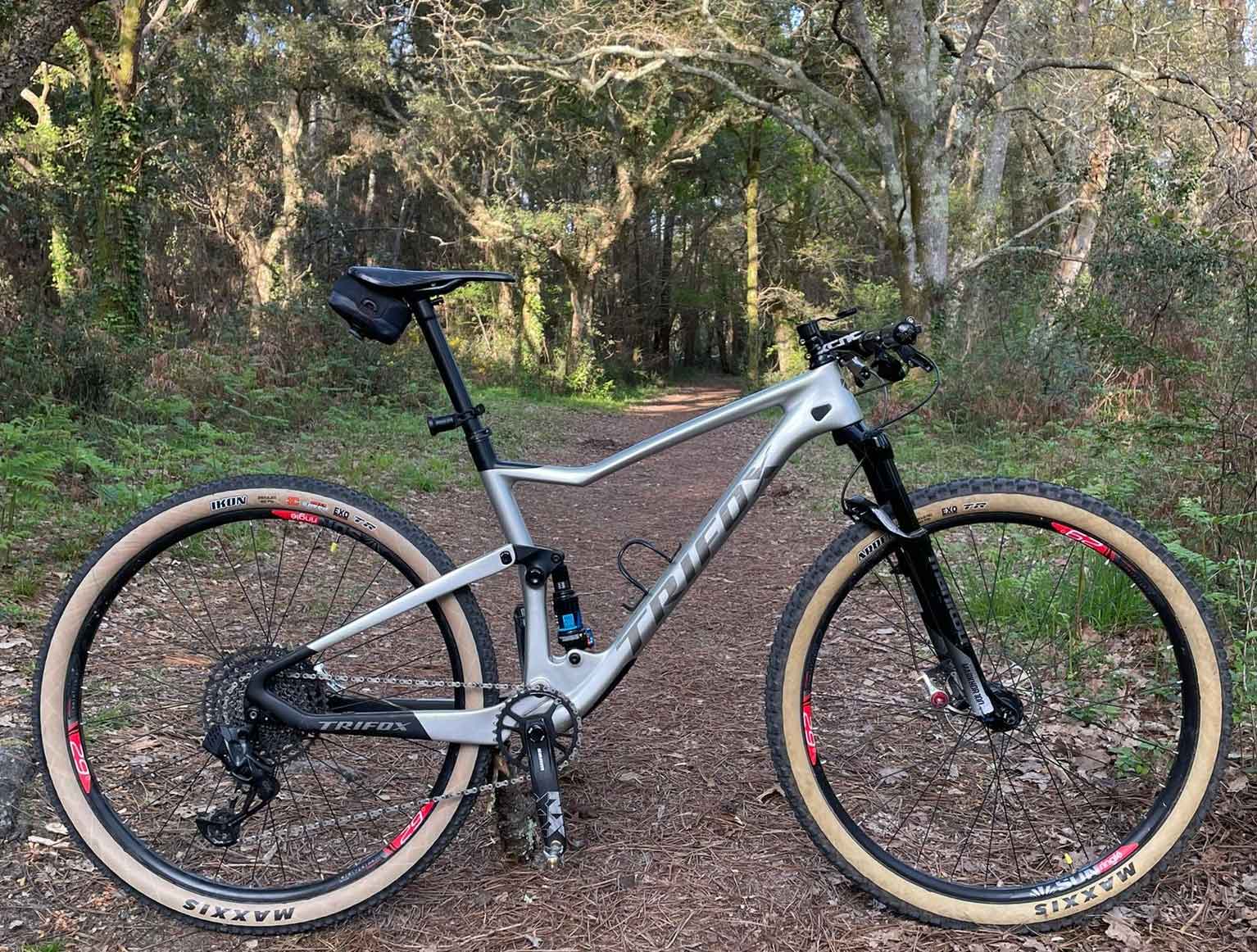
The chain is the most important accessory for the bicycle to rotate forward, and the chain is constantly rubbing against the chainring, so it is important to add the correct chain oil to increase the smoothness of its use. The bicycle chain, flywheel, and large plate are called the transmission system. The chain rotates the chainring to drive the rear wheel forward. Regular oiling can reduce the generation of abnormal noise, reduce the loss caused by friction, and reduce the possibility of the chain breaking. Types of chain oil Basically, bicycle chains do not use motor oil, sewing oil, etc., which are used in automobiles and motorcycles, mainly because these oils have a limited lubrication effect on the chain and have strong viscosity. It is easy to stick to a lot of mud and sand, and even splash everywhere. Both are not a good choice for bicycles. It is recommended that you can buy special chain oil for bicycles. There are many different types of oil. Basically, you can remember the dry and wet styles. Dry chain oil Use in a dry environment, because it is dry, it is not easy to stick to mud and sand, and it is easy to clean; the disadvantage is that it is easy to volatilize and requires more frequent oiling. Wet chain oil Use in a humid environment, suitable for routes with accumulated water and rain. The wet chain oil is relatively viscous and can be attached for a long time and is suitable for long-distance travel. The disadvantage is that it is sticky, which makes it easy to stick to the mud and requires more careful maintenance. Oiling method The general way of oil use is divided into drop type or spray type, but the oiling position is the same. Fix the bicycle with a side stand, display stand, or against a wall. Rotate the pedal backward to drive the chain, and spray the spray chain oil onto the chain at the same time; while the dripping chain oil drops on each item of the chain, you can also use the pedal to rotate backward to evenly apply oil.Use the transmission to change to each gear, so that each gear has a lubricating effect. Note: that chain oil does not need too much, and try to avoid sticking oil to the brake rim or disc, which can reduce the adhesion of sediment and maintain brake safety.
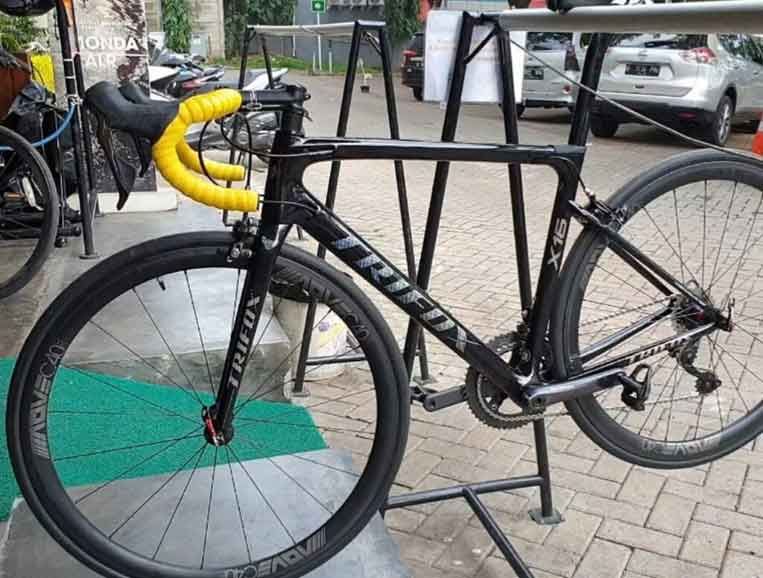
When it comes to maintenance, each of us will have a strange flower around us. Experienced riders are not excluded!In fact, wrong maintenance methods hurt the bike more than no maintenance!Don’t feel guilty! It’s not that you are not good at it, but your maintenance method is not good! 1. Use the wrong tool Everything you think you need can mess up your bicycle. Many riders think that it’s nothing to burn money on the bicycle, but they use the cheese-like hexagonal tool to “fix” the bicycle! A mismatched hex tool can cause damage to your bicycle. You may also want to buy some suitable wire pliers (not vise or garden trimmer) A bottom bracket tool (not a hose wrench) A foot wrench (not an adjusting wrench) A tool for unloading the flywheel and a chain whip (not to fix it on the workbench, this will not only damage the freewheel but of course the workbench) 2. The wrong adjustment of the headset will cause a series of bad things We have seen many people think that they can tighten the headset by simply turning the bolt on the cap of the headset. In fact, if you want to tighten the headset to the correct torque value, you must first loosen the bolt on the stem, and then tighten the bolt on the cap of the headset. But do not use too much force! 3. Don't understand the limits of one’s abilities Some questions are left to the technician. Trying to repair the bicycle by yourself is indeed a rewarding experience (even if it is a little bit). Knowing your ability to repair your bicycle clearly-it’s always right to find your place! In most cases: If you have questions about repairing a bicycle, let go of your pride and leave the repair to a professional technician. Don’t do a “professional” overhaul of the bike before an important race or event. This is likely to cause bitter results for the next day’s race. 4. Torque is too tight You may think “Well, it looks like 5Nm”, but that obviously won’t work If the screws and bolts on the bicycle are loose, it will obviously cause a lot of problems, but it is also not good to screw them too tightly.If it exceeds the torque value indicated in the figure above, it will cause the thread to slip, or the parts will be tightened too tightly, which will easily crack or break. We suggest you buy a smaller torque wrench for bicycles 5. Install tires with a tire lever The magic is that sometimes it’s rainy, sometimes it’s cold, and even when you ride somewhere halfway, it will blow out!God help me, I just use a spoon! But please never do this. Instead, you can try to install the bead into the groove in the middle of the tire, and then slowly adjust its position by hand instead of brute force. 6. An inappropriate flywheel is installed on the bicycle You still naively think that you can do it this way. Actually, some people just buy a 10-speed flywheel and install it on a 9-speed bicycle? Naively think this is all right? It is absolutely impossible! Don’t think that there is a shortcut because there is no shortcut.How many speeds your transmission is, what is the shifting function, these are all preset and each gear change is matched with a corresponding shifting wire, these are not just for you to install more or fewer chains at will The gear teeth can be changed because they are not compatible. 7. The wiring is worn out Worn wiring is something we don’t like to see.When you squeeze the cable cap, remember not to squeeze it too tightly, or you may break it. The normal bicycle wire pliers are well controlled at this point. You can use it when making operations, not the kitchen scissors or hedge shears. 8. Pull out the inner cable Treat internal wiring: be careful! When you find that you accidentally unplug the inner cable from the frame, there should be nothing that scares you more than this! You hope that one day it will magically find its way home-but it is impossible! The correct approach is to extend the cable into a tube a little narrower than the frame tube before pulling out the cable completely, and then put the tube into the frame so that the cable does not easily fall out. Even the most experienced riders will get confused and feel at a loss! Get a bunch of unsuitable tools and make a bad decision on repairing a bicycle. Without one or two knowledge supplements, the maintenance should be terrible!
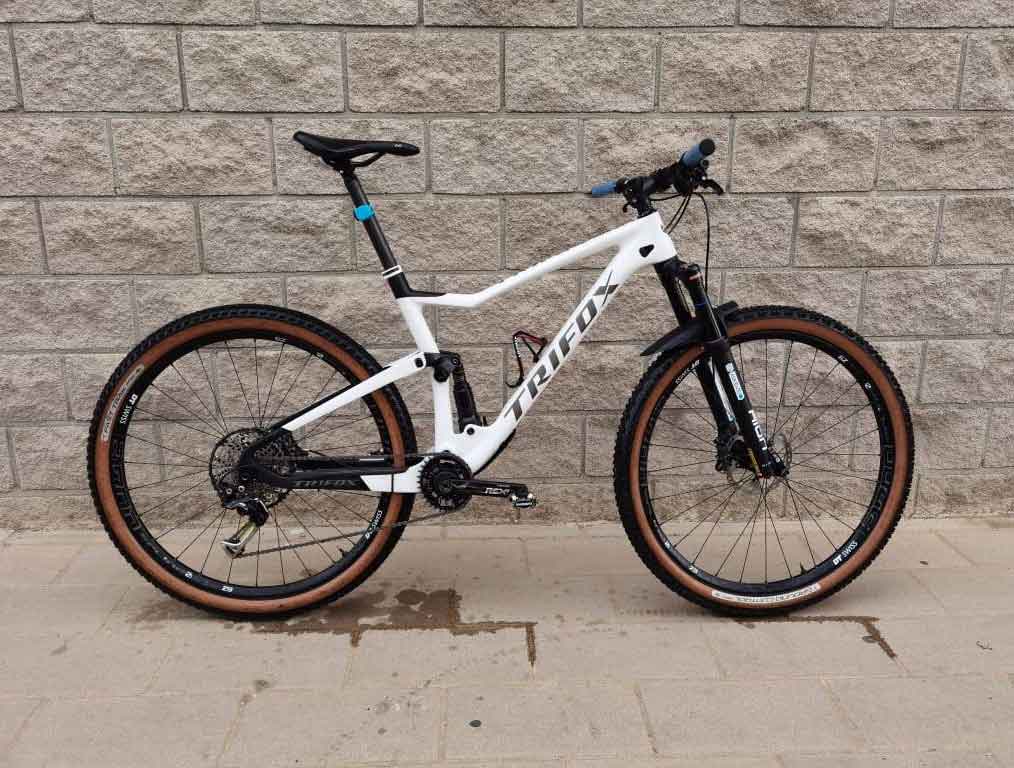
1. Stomach pain This problem is often caused by overeating. When you are riding a bike, the energy gel that you eat may make you feel good about yourself, full of energy, and happy like a Dick cowboy. But when you stop, too much energy gel makes you feel stomachache and nausea. The solution is to take the right amount of supplements. Under normal circumstances, one to three hours of cycling activities usually requires an intake of 30-60 grams of carbohydrates. Of course, this is only an approximate value. The specific value needs to refer to your activity intensity and weight. 2. Headache Dehydration during cycling is cruel, and this is often the culprit that causes your headaches, so make sure you have enough water, but don't drink too much. The amount of water you drink should not exceed 200ml at a time, and the interval between two drinks should be at least 15 minutes. In addition, it is recommended to wear blackout riding glasses when riding in sunny weather, because the strong sunlight can make you dizzy, cause visual fatigue, and cause headaches. Of course, if you often have headaches while riding, you’d better check with a doctor. 3. Bloating For bloating, drinking more water and taking a few bites is always the best answer. You might say that I drink a lot of sports drinks, but the high-electrolyte and high-sugar drinks you drink cannot provide enough water to balance the body's water content. When riding and pedaling hard, most of our blood is transferred to our legs, and less blood is used for digestion in the stomach. At this time, it is the key to allowing energy to be absorbed quickly, so “dilution” is particularly important. 4.Leg cramps Leg cramps are mostly caused by low electrolyte content in the body. Generally, you can put some electrolyte effervescent tablets in the direct drinking water to provide your body with sodium, potassium, magnesium, and calcium. But for some leg abusers, a few sips of electrolyte sports drinks will not help. You have to force yourself to slow down, calm down, and ride on a lower power for more than ten minutes to let the lactic acid accumulated in the legs gradually Disperse, save power for the next day of riding. 5. Urgent need to urinate If you are riding a bicycle and often want to jump down from the seat to the nearest toilet, then you may need to adjust the angle of the seat or adjust the posture on the seat. If your seat has been adjusted several times and you try different riding positions, the problem still exists, perhaps it may be a urinary tract infection, don't worry, it is best to consult a doctor. 6. Dry cough Have you ever tried to return home after riding in the colder weather, and you have a dry cough, and you feel like your lungs are coughing out… This is a fairly common problem. If you have a mild dry cough, you just need to wash it warm Take a shower and take a short rest, and the symptoms will subside on their own. If the dry cough is constant, the respiratory tract may be affected. Then, seeing a doctor is your first choice. A good body is a fundamental guarantee for us to continue riding, so please cherish your body. When your body sends a distress signal, don’t try to ride a bike. , Should make reasonable disposal in time.
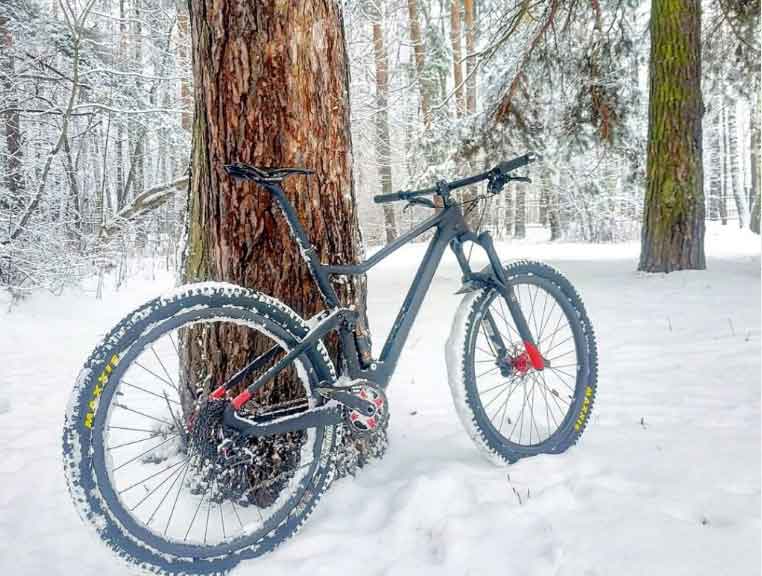
Winter exercises can improve the body's ability to adapt to cold conditions. The body is strong and the chance of getting sick is much less than that of ordinary people. But for some people with a softer respiratory tract, the dry and cold air outdoors in winter often makes their outdoor exercise plans sour. In fact, as long as you pay attention to some basic breathing methods during exercise, you can protect your respiratory tract from the damage of dry and cold air during winter exercise. Outdoor exercise is best to breathe through the nose When doing physical exercises in winter, you should consciously control your breathing rate. It is best not to exceed 20-30 beats per minute. The breathing rate can reflect the human body's exercise capacity. For people who have just taken outdoor exercises, a fast breathing rhythm often indicates excessive exercise intensity. In winter, the air itself is relatively dry, and breathing is too rapid, which will cause a greater burden on the respiratory system and increase the incidence of pneumonia and bronchitis. It is best to breathe through the nose during outdoor sports in winter. There are abundant blood vessels and more secretory glands in the nasal mucosa. When the cold air passes through the nasal cavity, it can play a role in heat preservation and moisturizing, so as to avoid cold, dryness, or accompanying Dust and pathogenic microorganisms are inhaled into the lungs. Even if you can't breathe completely through your nose during high exercise intensity, you should take a combined mouth-nose breathing method, or roll the front of your tongue slightly against your palate to prevent the cold air from directly irritating your throat and lungs. Deepen exhalation to improve discomfort You should pay attention to adjusting your breathing style during outdoor sports in winter. Especially for people who have just started to exercise, their own respiratory system, blood oxygen supply capacity, and the activity of the entire body are poor. If the exercise intensity is too high, it will tend to increase the frequency of breathing, and more superficial breathing occurs. In this way, the inhalation depth is greater than the exhalation depth during exercise, which will cause the chest to become stuffy and difficult to breathe for a long time. At this time, you should adjust your breathing method and exhale more deeply. This will improve your breathing and reduce the discomfort caused by winter sports.
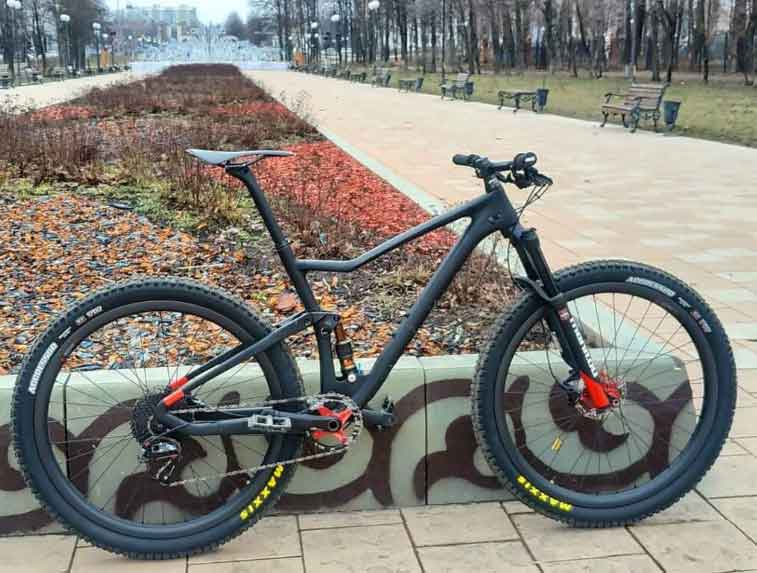
1. Single pivot point system suspension Main structure: Single pivot point system is currently the most common type of front and rear shock absorber. The lever of this system only uses one bearing to connect to the frame, and the position of its upper bearing determines the riding performance of the car. Like Cross Country, the bearings are mostly at the height of the middle chainring; the bearing position of the freeride model is relatively higher and slightly forward. Advantages: lightweight, cheap, and easy to maintain. Disadvantages: easy to shake and easy to be interfered with by the transmission system. Technology: Most of the Single pivot point system adopts a compromise approach, so it is recommended to use the rear shock absorber of the stepping platform. 2. Linkage-driven Single-pivot Suspension Main structure: The rear suspension system of this structure is most easily confused with the four-pivot point system suspension because the two are the same in terms of the number of pivot points; but from the functional point of view, the function of this rear body is the same as that of a single pivot point The system is very similar. In this structure, there is no link connecting the main bearing of the pedal bearing and the rear wheel shaft. Simply put: it is a single pivot point system suspension with multiple pivot points. Advantages: good rigidity, no uneven load of unilateral shock absorbers. Disadvantages: It is easy to shake due to more bearings. Technology: If a rear shock absorber with a stepping platform is used, its performance can be greatly improved. 3. four-bar linkage system Suspension Main structure: It is a design method in which the bearing point on the chain bracket is located before the rear suspension. This is the difference between the four-pivot point system and the multi-pivot point system. In this way, the rear wheel moves on a turn formed by four bearing points. For example, on Specialized models, the rear wheels are vertically upward to absorb shock. In this case, the shock absorber must also operate independently of the chain. Advantages: extremely flexible action, no interference from the transmission system. Disadvantages: There is a bearing, which is slightly too heavy. Technology: Since there is no interference from the transmission system, there is no need for a rear shock support system with a stepping platform or just a lighter one. 4. four-bar linkage Suspension without sinking Main structure: It is a kind of Four-pivot point system suspension. In this structure, the rear wheel absorbs shock obliquely behind. In addition, its shock absorbers also have no reverse easing stroke. In the event of a collision, the shock absorber will immediately pull away from the chain guide bar after absorbing the shock, which will also cause annoying subsequent shaking. Advantages: No shaking, stable even when cycling in a standing position. Disadvantages: Need to do the precise adjustment, comfort will be affected. Technology: There is no need for a rear shock absorber to step on the platform because the shock absorber system has already taken anti-shake measures. 5. Floating link system Main structure: Although the floating connection system looks extremely complicated, it is basically a four-bar system without compromise. Its special feature is that the shock absorber is suspended between the revolving rod and the connecting rod. This design allows it to have fine acuity and a lower center of gravity. Advantages: high acuity, good transmission system, low center of gravity. Disadvantages: complex frame structure design is required. Technology: With ordinary springs, this floating connection system can perform extremely well, and there is no shaking when pedaling. 6. Virtual Pivot Point (VPP) system Main structure: This virtual Pivot Point turning point system is driven by two revolving rods to drive the entire rear wheel, using its cushion stroke to make an S-shaped turning motion. In this way, the shock absorber will automatically be positioned at a position without interference with the transmission system when stepping on it. Advantages: no obvious shaking when stepping on. Disadvantages: Need to be carefully adjusted, flexibility is not high, there is a slight kickback phenomenon. Technology: A rear shock absorber with a stepping platform is not very needed, and it can only improve its standing cycling function. 7. Single link system Main structure: In this single connection suspension system, the pedal bearing is connected to the frame and the rear wheel in a mobile manner, thus forming a mixed structure of multiple links and transmission links. The stronger the rider’s pedaling force, the less stress the suspension system will bear. Advantages: There is no shaking when riding in a standing position, and the body is stable when pedaling. Disadvantages: If the rider leaves the seat cushion, the shock absorbers will not be sensitive enough. Technology: There is no need for a rear shock absorber with a stepped platform because the system itself has almost no shaking.
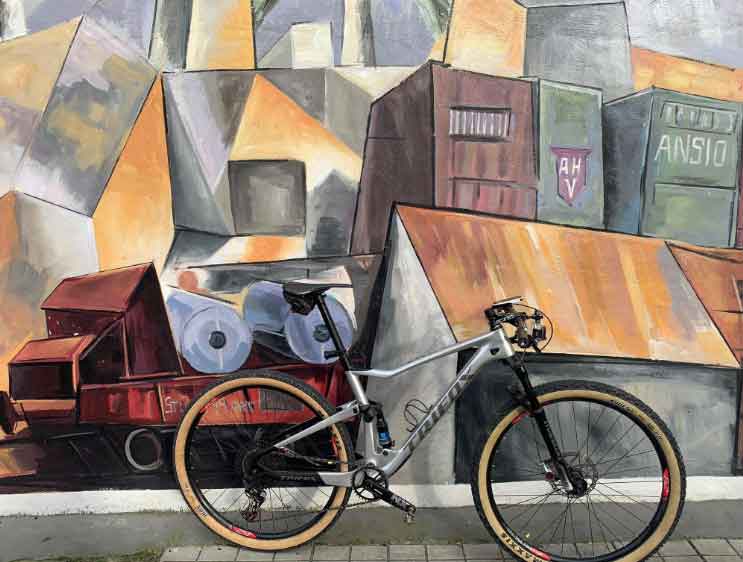
Some tips for adjusting road brakes are not aligned? Many road cyclists are used to it. But this habit is very bad! It could be aligned in the center, but do you want it to be crooked? 1. Check The brake pads (or brake shoes) may not be aligned, please check if they are aligned with the center of the brake edge. 2. Release the brake shoe Turn the Allen key counterclockwise to loosen the brake shoe/brake pad in the caliper, adjust it up and down and level it. 3. Align Adjust the brake shoe to align the brake pad with the brake edge, and then tighten the fixing screw. Be sure to hold the brake pads when tightening the screws, because the brake pads will move under force when tightening. If it does not meet the requirements, please do it again. 4. Centered Stand at the rear/front of the car and look at the brake clearances around the caliper. 5. Tighten the clamp fixing screw It's definitely not good to be invisible! Adjust the fixing screws until the rim is centered. Many people like to loosen this fixing screw, saying that it can be automatically aligned when braking (for the safety of riders, please be sure to tighten it! Avoid the risk of loosening the fixing screw and the clip falling!) 6. Adjust the brake cable Fix the brake cable! Adjust the brake spacing! If necessary, loosen the screws and readjust. Although there is usually an adjustment screw for the brake spacing here, I think this screw is mainly used to compensate for the wear of the brake pads and achieve a consistent brake feel.
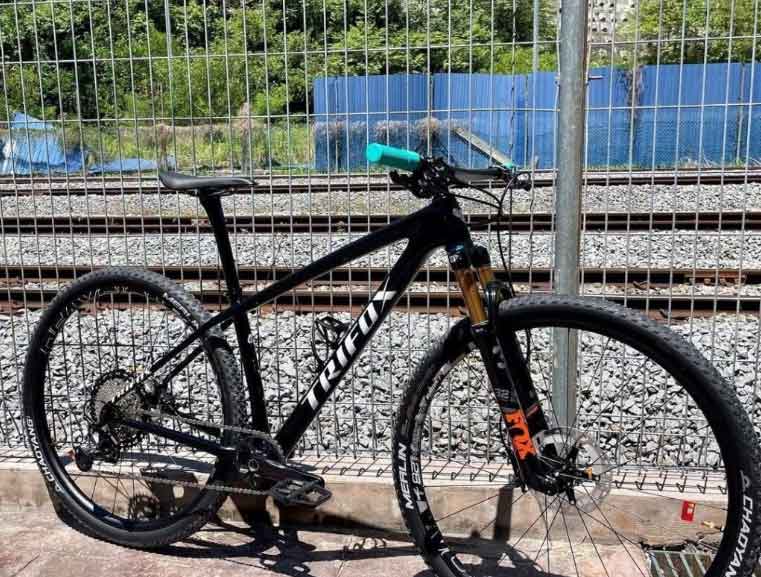
As a mountain biker, choosing the right frame is crucial for maximizing performance and enjoying the sport to its fullest. With so many different options for frames on the market, it can be overwhelming to decide on the right one for your needs. 1. Consider your riding style: When choosing a hardtail mountain bike frame, it's important to consider your riding style. Whether you're a cross-country racer or a hardcore trail rider, different frames will perform better in certain situations. The Carbon MTB Frame SDY20 is designed for cross-country riders who are looking for a lightweight, high-performance frame that can handle tough terrain with ease. Its T1000 Carbon Fiber Material makes it ultra-light and agile on the trails. 2. Look for durability: Durability is another crucial factor when choosing a hardtail mountain bike frame. You want a frame that can withstand the wear and tear of hard riding and keep going strong for years to come. The Carbon MTB Frame SDY20 is made to last with its high-strength carbon fiber material and robust design. Its Boost Ø12*148mm Rear O.L.D. and BB68 BSA Bottom Bracket make it sturdy enough to handle even the toughest trails. 3. Consider the weight: When it comes to mountain biking, the lighter your bike is, the better it will perform. A lightweight frame will make it easier to climb hills, maneuver around obstacles, and ride faster on flat terrain. The Carbon MTB Frame SDY20 is one of the lightest frames on the market, making it a great choice for cross-country riders who want to maximize their performance. 4. Look for ergonomic design: Comfort is key when it comes to mountain biking, and an ergonomic design will help you feel more comfortable on the trails. The Carbon MTB Frame SDY20 features an ergonomic design with a seatpost that is designed to provide maximum comfort for riders of all sizes. Its Internal Cable Routing further adds to its sleek design and also reduces the chance of tangled wires. Choosing the perfect hardtail mountain bike frame requires careful consideration of your riding style, durability, weight, and ergonomic design. The Carbon MTB Frame SDY20 is a great choice for cross-country riders who are looking for a lightweight, durable, and ergonomic frame that can handle all types of terrain. By keeping these factors in mind, you can choose the perfect frame that will help you enjoy mountain biking to the fullest.
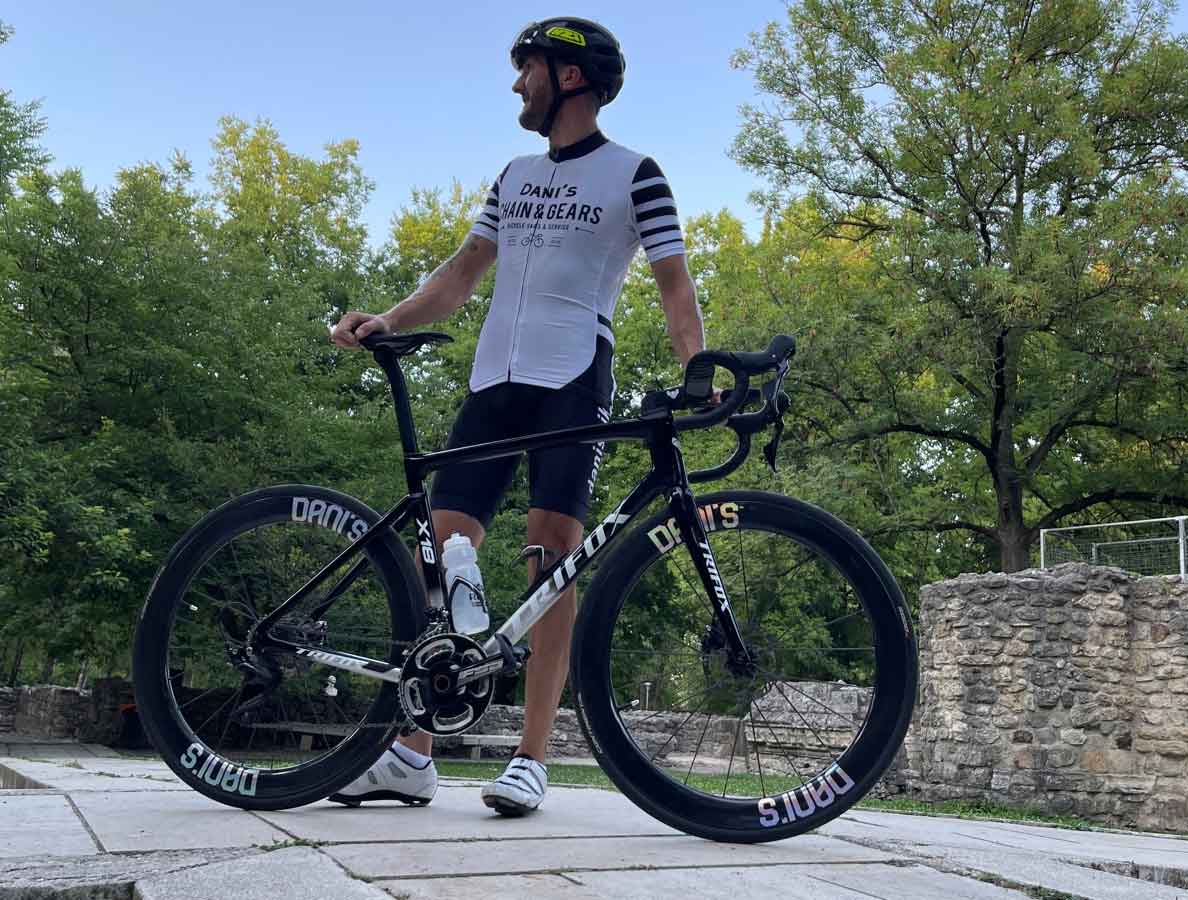
1. Avoid not wearing a helmet In 2015, news that “a female college student died of flying without a helmet” was reprinted on the Internet, which made cyclists heartache. You must wear a helmet when you are riding because it is directly related to your life safety. In addition, it is necessary to check your equipment, brake system, lighting, tire pressure, etc. before cycling. 2. Do not judge the quality of other people's bicycles at will Don’t judge the quality of other people’s bicycles based on their appearance, this is a taboo thing for cyclists! Even if you know it well, keep a low profile and ride happily! 3. Avoid drinking when cycling Many cyclists like to drink a bottle of beer to quench their thirst after cycling, but in fact, it is not suitable to drink alcohol whether during or after cycling. Because drinking will first cause a short period of excitement in the cerebral cortex, then there will be slow response and sleepiness, which will reduce discrimination, concentration, and judgment, and affect the balance and coordination of the body, which may easily cause cycling Danger. In addition, alcohol can speed up the heart rate, increase myocardial oxygen consumption, and increase blood pressure, which will increase the burden on the heart. There are also express provisions for non-motor vehicles in the law.In short, don’t drink when you cycle and don’t cycle when you drink! 4. Avoid running red lights and go retrograde Cyclists must abide by the traffic rules. When cycling, they must not run red lights, go retrograde, rush, change lanes at will, ignore others, and make calls while cycling. When passing an intersection, slow down, pay attention to pedestrians and vehicles, and be courteous to others. When traveling in groups, walk in an orderly manner. To be harsh, don’t think that it is a non-motor vehicle. Security is fundamental. 5. Avoid speeding In the UK, a cyclist was fined £620 for speeding. Do not overspend during non-competitive cycling, master the speed, adjust the handle and seat height, and pay attention to maintaining the correct posture. When stepping on the toeboard, the position of the foot should be appropriate, exert even force, and pay attention to maintaining a certain rhythm, otherwise, it will fatigue the ankle and knee joints. Good cycling habits help safe riding! 6. Stop occupying the road, grab the road It has been reported on the Internet that a rider was riding on a right-turn lane of a motor vehicle and was severely hit by a car in the rear preparing to turn right. The rear wheel was crushed, the man was knocked out and the helmet was torn apart. Fortunately, people are not serious, this is a living lesson. When a motor vehicle turns right on a dedicated lane, you must pay special attention to the incoming traffic from the rear, try not to grab the lane, and ensure your own safety, and you are a smart rider. 7. Avoid Cycling when you get sick Whether you are cycling short or long distances, don’t continue cycling when you get sick, but take a good rest. Especially for long-distance riding, you should not ride the plateau with illness. High altitude sickness, excessive diet, lack of oxygen, catching a cold, and going to high altitude will cause harm to the body. 8. Try not to rush at night Many cyclists like to ride at night, but in the suburbs far from the city, there are no street lights. Even if you are equipped with a lighting system, due to unfamiliar road conditions and the uncertainty of vehicles on the road, please try not to ride after dark. The danger is everywhere. Riders who ride long distances should pay more attention.

















